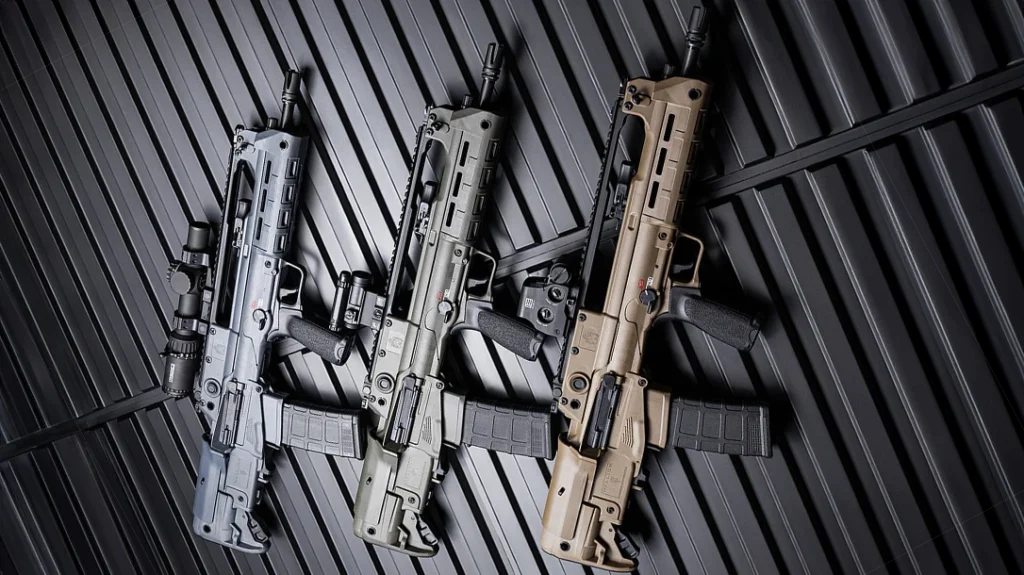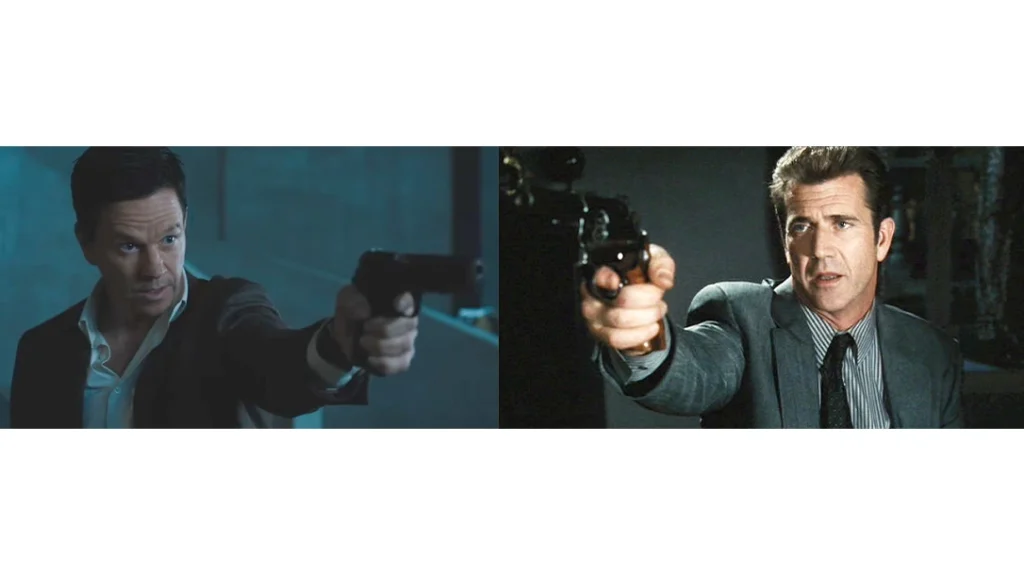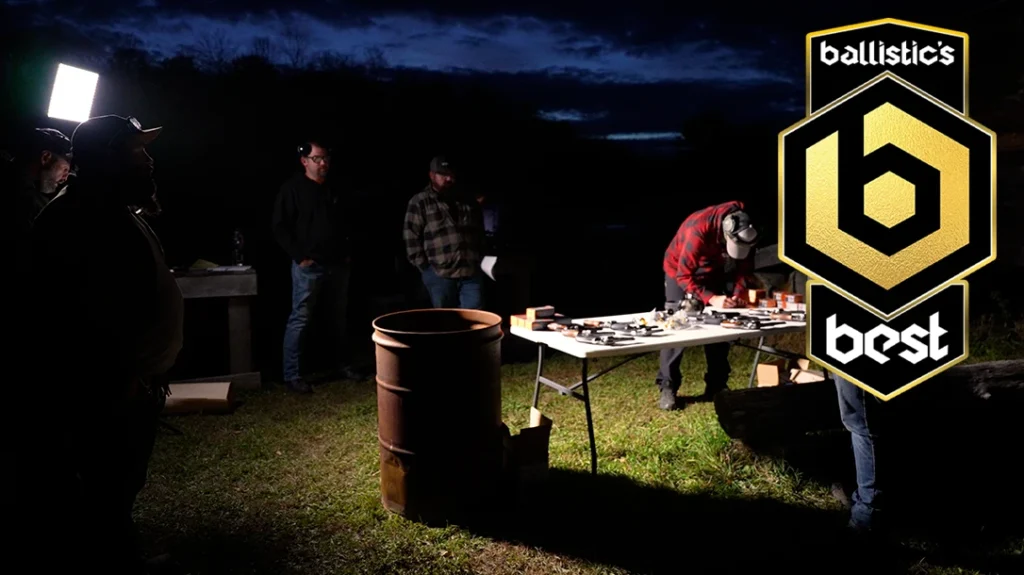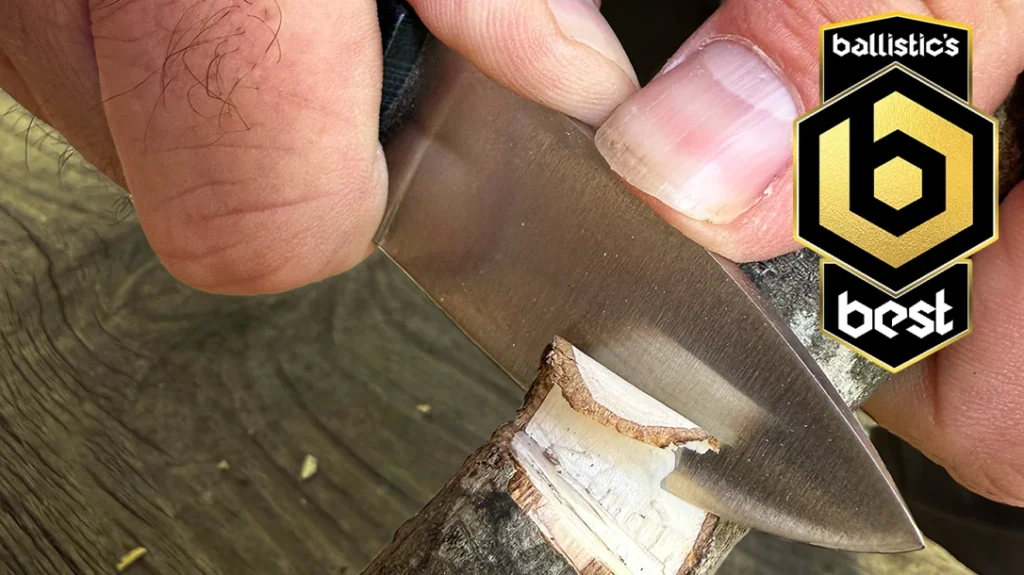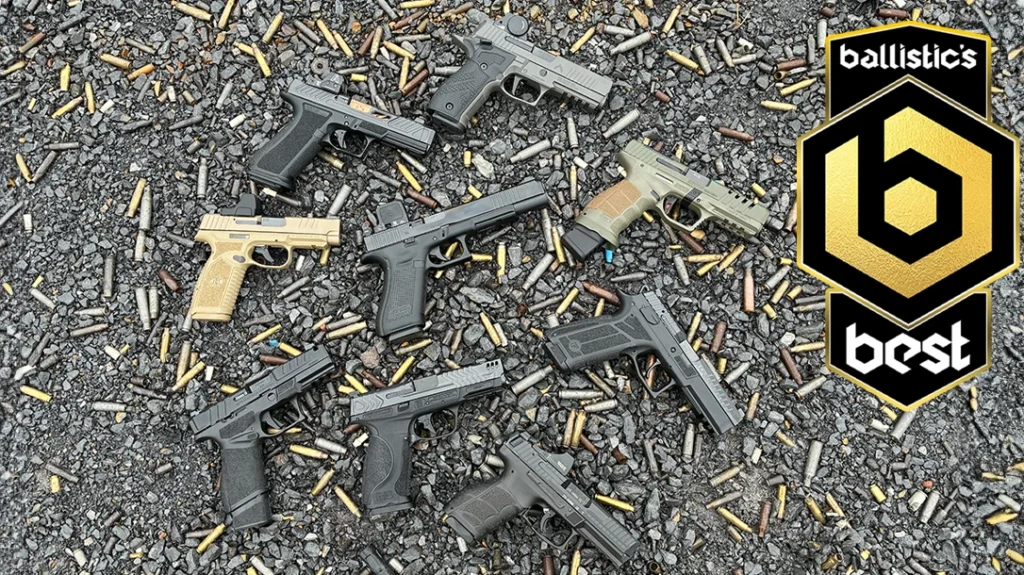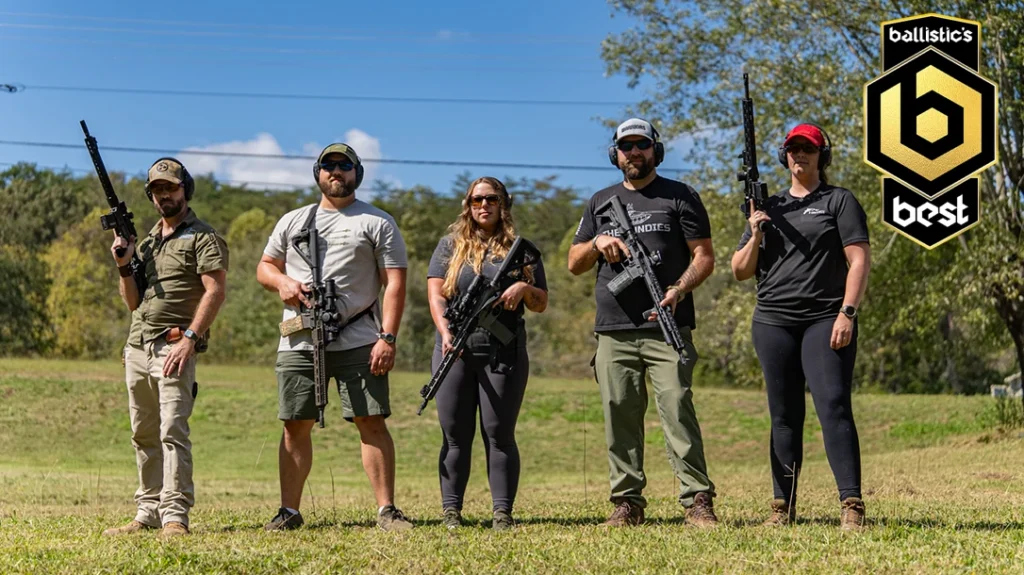Smith & Wesson’s new micro .380 ACP may be the perfect pocket pistol. The S&W .380 Bodyguard 2.0 is a polymer-framed, striker-fired pistol capable of feeding from 10- and 12-round magazines. At first glance, one could mistake it for a toy gun. It measures 5.5 inches long, roughly palm sized, and 4 inches tall with the 10-shot flush-fit magazine. A 12-round extended magazine adds a little more front grip strap. Meanwhile, the 10-rounder remains easier to control. A deeply undercut triggerguard, along with a medium-sized hand, blend to enable almost a full three-finger grip. This equates to more grip surface than available on most micro pistols.
TESTED: S&W .380 Bodyguard 2.0
The grip surface has an effective molded in stippling similar to 80-grit sandpaper on the front and backstraps with the middle portion less aggressively textured as not to abrade the skin when carried. The frame includes textured finger indexing pads molded on the left and right, helping keep the finger off the trigger until the shooter is ready to fire. I found this pistol, which has an 18-degree grip angle, to be a perfect natural pointer in my hand, the barrel in exact alignment with my extended index finger.
This little pistol showed unexpected accuracy. Shooting from the bench at 7 yards with a Caldwell Pistolero rest, I tested three brands of premium .380 ACP self-defense loads by firing a series of five-shot groups. Hornady Critical Defense 90-grain FTX JHP averaged 0.79 inches. Remington Ultimate Defense 102-grain coiled brass and bonded JHP averaged 0.96 inches. Winchester Train & Defend D 95-grain JHP averaged 1.05 inches.
Advertisement — Continue Reading Below
When cutting ragged holes in paper turned dull, I switched to plinking golf balls for a while. The pistol never missed a beat functionally, until I tried some Fiocchi Defense Dynamics 90-grain JHP ammo. I never had problems with any Fiocchi ammo before, but apparently the little pistol did not like the shape of its ogive because I couldn’t get any of it to chamber short of hand loading it in the breech one round at a time. Like most autoloaders, this little pistol has its specific tastes.
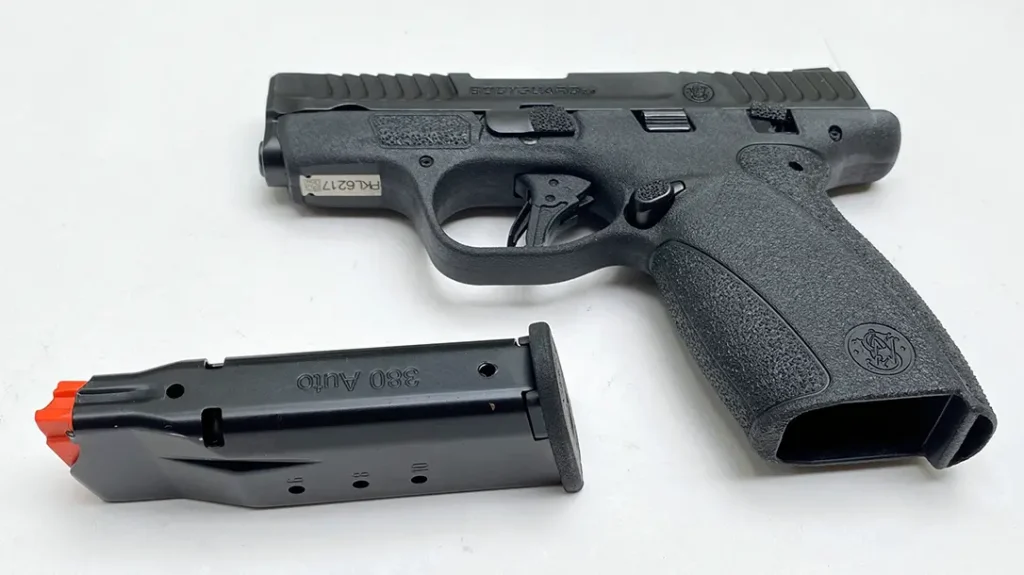
Tame Defender
Recoil is fairly tame with .380 ACP in general and especially so in the Bodyguard 2.0, so I tried some rapid-fire drills to see just how quick I could run it. It came down to 10 rounds in an average of 2.03 seconds. My best group at 7 yards was 6.62 inches, and three groups overlapping covered an area 7 inches wide by 10 inches high. Point shooting from the waist at the same range, I was able to hit a gallon paint can hanging from a wire more often than I missed it. After an hour and half on the range, I decided I love this gun.
Advertisement — Continue Reading Below
The 0.75-inch thick slide looks disproportionately small for the grip frame and contributes to the pistol’s controllability in rapid fire. The bore axis is low as is the reciprocating mass of slide, which works to reduce muzzle flip. The grip is 0.88 inches thick, reaching a maximum thickness of 1.0 inch only across the magazine release button. People with small hands may just love this the pistol, though people lacking finger strength might have some difficulty operating the controls with just the shooting hand.
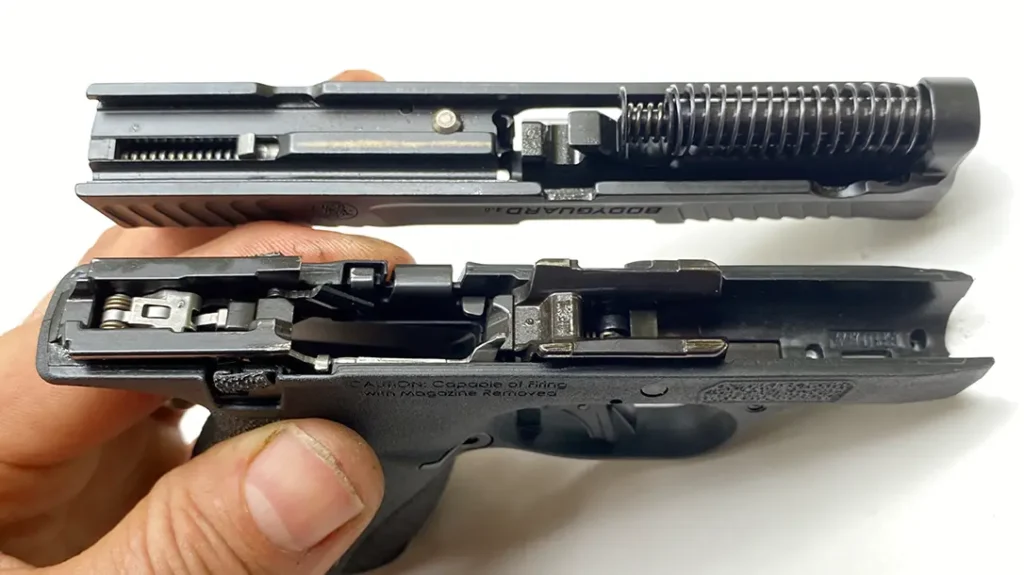
Concealability & Control
All the controls are steel. The button surfaces of the magazine release, takedown lever and ambidextrous manual thumb safety (an option I find highly desirable on a pocket pistol) are very aggressively textured. The only one that might cause a problem for people with soft skin is the manual safety. Using it all day, I found it was actually filing down the callus on my thumb. That being said, the safety engages and disengages positively, and the button’s aggressive texture should make it easy for just about everyone to swipe off with the inside of their thumb during the draw. That’s about all you can really ask of a manual safety.
Advertisement — Continue Reading Below
The slide lock release has a grooved surface, and there’s not much of it standing proud to get hold of. If your hand strength is limited, expect to use the supporting-hand to work it. By contrast, the magazine release button stands so proud that I accidentally dropped the magazine in shooting a rapid-fire string. After that embarrassing episode, I started using a high thumb grip and managed to keep the magazine in the gun. Left-handers can easily reverse the button to the right side of the frame. Personally, I wish it was about half as tall as it is.
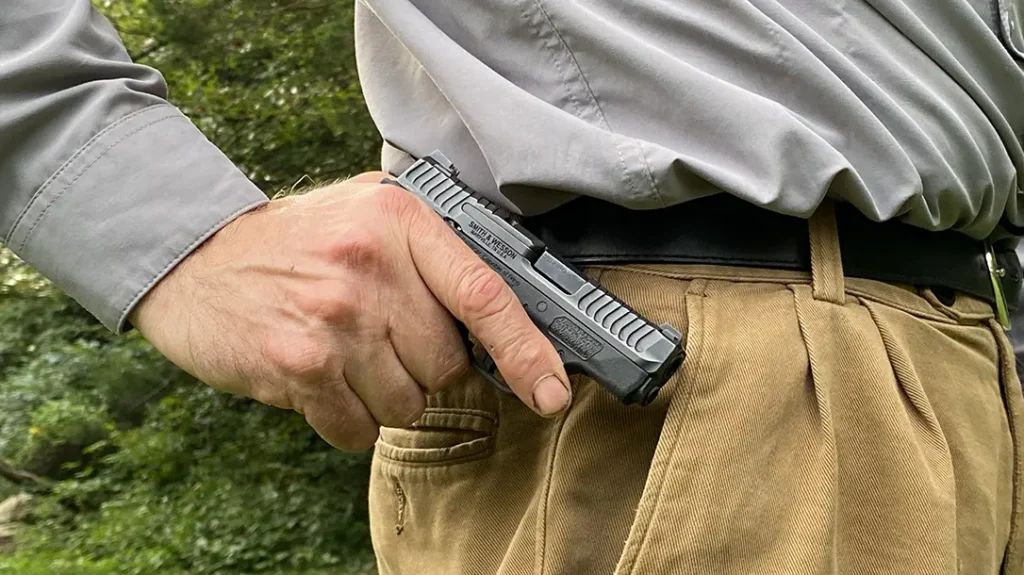
Rugged Sights
The steel sights are designed for ruggedness and fast acquisition in self-defense scenarios utilizing a broad “U”-shaped rear notch and a front post with a big dot inset enhanced with a tritium vial to provide a bold front sight aiming point in daylight that’s also visible in darkness. In the spirit of pocket pistols, the sights are low profile and slanted on the rear faces to minimize snagging on your clothing on the draw. The front face of the rear sight is at 90 degrees from the slide to allow hooking, on the belt for example, for emergency racking of the slide with just the shooting hand. The sights are dovetailed on the slide and so adjustable for windage.
Advertisement — Continue Reading Below
My test pistol shot about 1.5 inches low and 0.75 inches left of the point-of-aim at 7 yards, so I disassembled the pistol, stabilized the slide in the jaws of a shop vise padded with thick sheet aluminum and used a hammer and brass punch to drift the rear sight nearly 0.025 inches to center my groups. This in itself isn’t noteworthy, except that the sight was so tight in the dovetail that I was genuinely concerned I would break it before it moved. Better too tight than too loose though. I am certain it will never shift from its present zero.
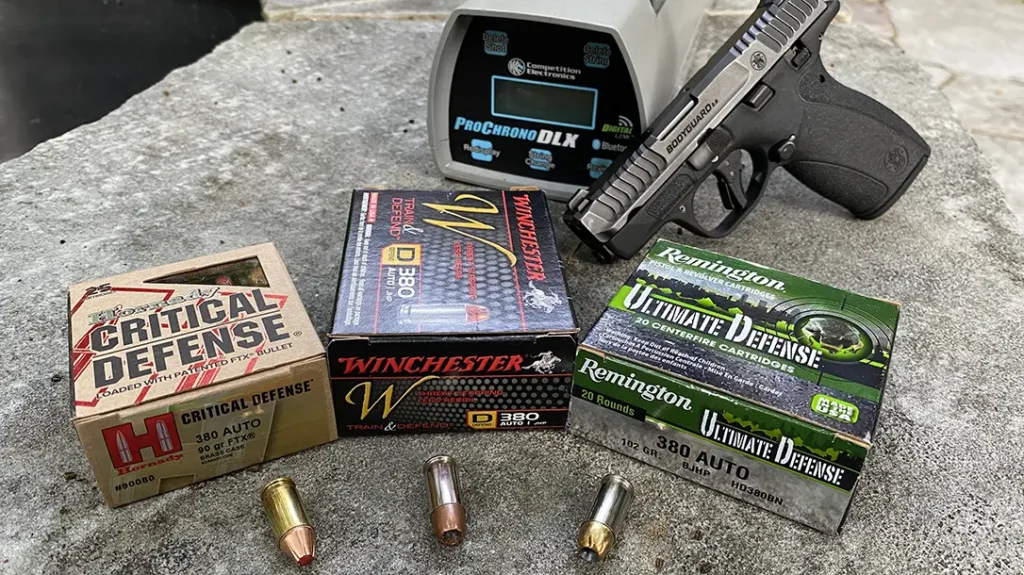
Impressive Accuracy
Since the Bodyguard 2.0 was accurate enough at 7 yards to plink golf balls with, I wanted to see what it could do at 25 yards, and the results were impressive. Using Hornady Critical Defense 90-grain FTX, the most accurate load tested, five-shot groups fired from the bench averaged 3.63 inches. I don’t know if all these pistols will shoot this well, but the one I tested was exceptionally accurate for a micro.
Advertisement — Continue Reading Below
In fact, that level of accuracy would be acceptable for a full-size service pistol. S&W states in the instruction manual that their average accuracy for pistols with 3-inch, or shorter, barrels is 1.7 inches at 7 yards, 3.9 inches at 14 yards and 6.5 inches at 21 yards. By that standard, my test pistol wildly over performed. Exactly why it shot so well is likely a combination of factors, not the least of which were its excellent, two-stage, crisp-breaking, 5-pound trigger pull and quality ammunition.
During my disassembly and inspection of the pistol, I noted that slide-to-frame fit was quite tight with no apparent wiggle, nor was it possible to perceptively move the muzzle in any direction when the pistol was in battery. In addition, when in battery the lateral movement of the breech within the slide’s ejection port was among the smallest I’ve ever seen.
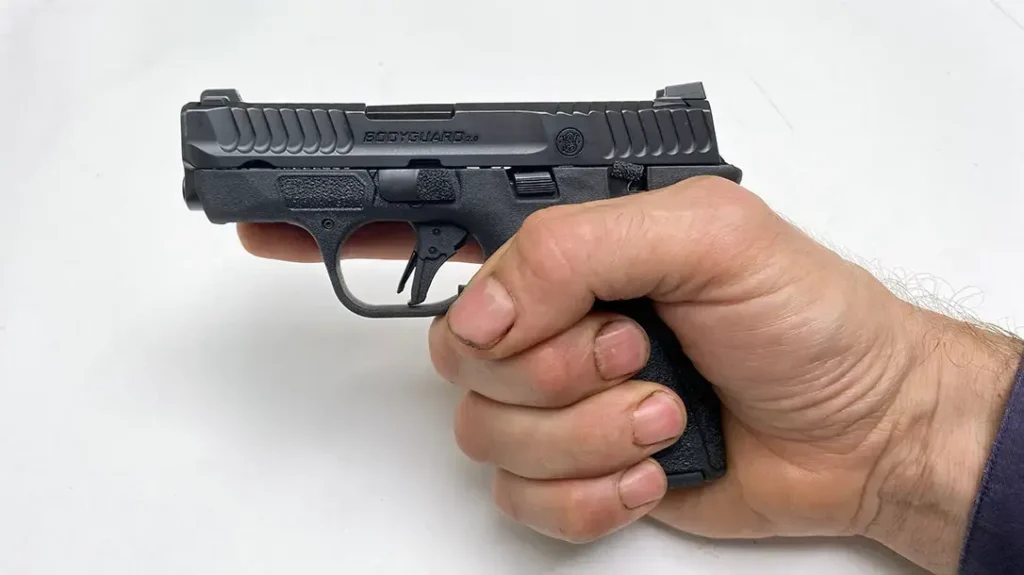
Advertisement — Continue Reading Below
S&W .380 Bodyguard 2.0 Internals
The Bodyguard 2.0 has front and rear slide guide rails pinned into the polymer frame that span a distance of 3.5 inches, providing support for the slide over 67% of its overall length. The rails themselves are also comparatively long, measuring 1 inch in the front and 1.19 inches in the rear. Both of these rail sections, and the other visible firing components that were not sheet metal stampings, are metal injection molded (MIM) parts. What I could inspect of the sear mechanism appeared well balanced and stable, which would tend to promote consistent operation and accuracy.
Lacking an exploded parts diagram, I did not disassemble it; and so can’t speak to the details of its design. S&W, like most gun makers, doesn’t want to encourage shooters to take apart the firing mechanisms of their pistols. One thing apparent in this design is that the striker mechanism can’t be disassembled for cleaning without first removing the rear sight. Realistically, that means that most people who own this gun, me included, will never remove the striker. Instead, special care needs to be taken to keep the striker channel clean to insure safe and reliable operation. I’ll be using a spray solvent to flush it clean. If you have a Lyman Power Pro 3L ultrasonic cleaner, or similar unit, it would be ideal to thoroughly clean out any detritus from the striker channel.
For more information, visit Smith-Wesson.com.
Advertisement — Continue Reading Below
Specifications: S&W .380 Bodyguard 2.0
- Caliber: .380 ACP
- Operation: semi-auto, locked breech blowback, striker fired
- Capacity: includes two magazines, 10 round flush fit and 12 round w/extended floorplate
- Barrel: 2.75 inch, stainless steel, 1:10 twist
- Slide: stainless steel, black Armornite finish
- Frame: polymer
- Safety: trigger blade safety and optional ambidextrous manual thumb safety
- Overall Length: 4.1 inches
- Overall Height: 5.5 inches
- Width: 0.75 inches
- Weight: 9.8 ounces empty
- Trigger: two stage, flat faced, average 5 pound pull weight
- Sights: steel, rectangular front post with tritium illuminated big dot and broad “U” notch rear with grooved rear sight face to minimize glare, dovetailed on the slide, adjustable for windage,
- MSRP: $449
Performance: S&W .380 Bodyguard 2.0
| Load | Velocity | Best Group |
| Hornady Critical Defense 90-grain FTX | 912 fps | 0.65-inch |
| Remington Ultimate Defense 102-grain BJHP | 833 fps | 0.81-inch |
| Winchester Train & Defend D 95-grain JHP | 804 fps | 0.89-inch |


